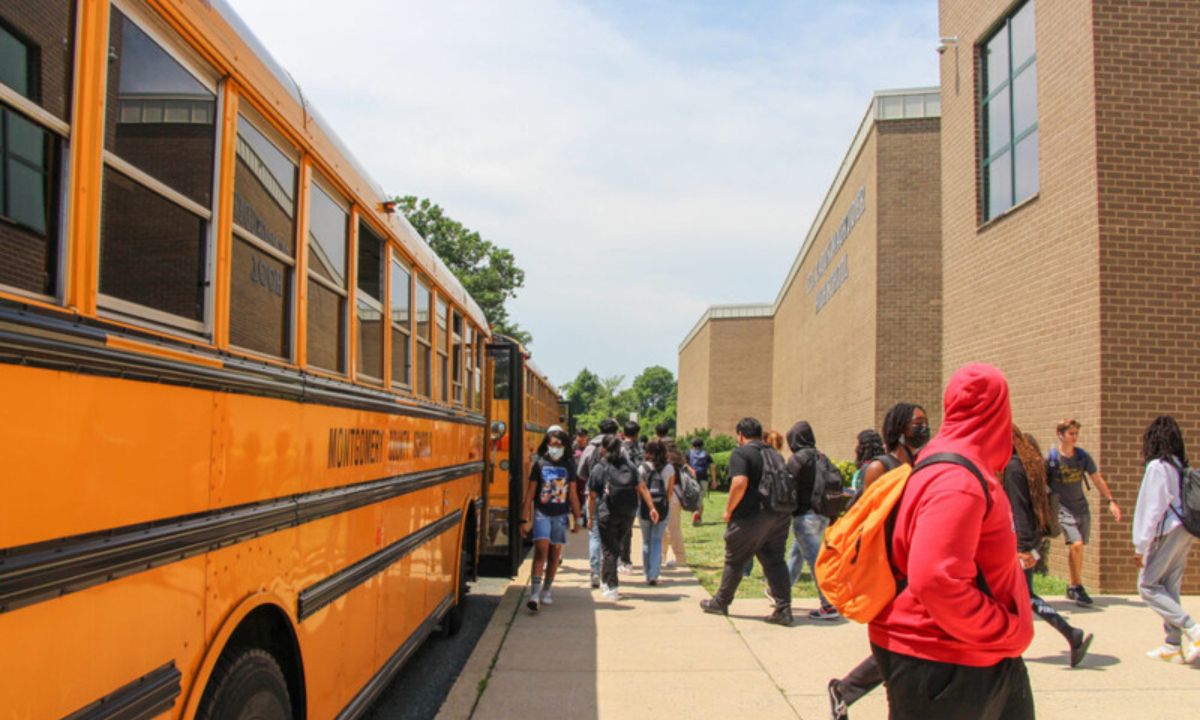Maryland Schools Have New Rules to Follow for Active Shooter Drills
The new guidelines are designed to prohibit trauma-inducing elements like imitation of gunfire or explosions.

Get stories like these delivered straight to your inbox. Sign up for The 74 Newsletter
By Marissa Yelenick
Active shooter drills in Maryland schools will be different next school year under a new set of state guidelines meant to limit the impact those drills have on the mental health of students.
The new guidelines are designed to prohibit trauma-inducing elements like imitation of gunfire or explosions. They also require school systems to notify parents in advance when students will be practicing what to do in the event of an active shooter in their buildings.
The new guidelines were released by the Maryland Center for School Safety this fall, ordered by a new state law requiring the center to draft new parameters and create a new process for collecting and analyzing data on their effectiveness. The center will also look into the psychological impact the shooter drills have on staff, parents and students.
Parts of the guidelines — including bans on gunfire and the requirement to notify parents — have already gone into effect because they are explicit in state law. The full set of guidelines will be put into effect at the beginning of the academic year in 2025.
“The mental health crisis that we see in our young people is undeniable,” said Del. Jared Solomon (D-Montgomery), who sponsored the measure in the House earlier this year. “As we normalize having to deal with school shootings, we are creating more anxiety and more issues among young people.”
While schools have long practiced safety drills, active shooter drills are relatively new, following the 1999 shooting at Columbine High School, according to the guidelines.
While school systems have made an effort to keep students safe by implementing active shooter drills, concerns have been raised across the country about the impact these drills have on student’s mental health. This led to the April passage of the Maryland bill, as well as an executive order signed by President Joe Biden to increase federal guidance on the subject.
Maryland’s new guidelines, released in October, call for unified terminology between districts to discourage miscommunication between the school system and the relevant public. They intend to increase communication between staff and students to create an open dialogue where everyone feels comfortable raising concerns, as well as creating a diverse planning team who will work on planning the drills and doing a post-analysis of how it went and any shortcomings it faced.
The guidelines emphasize that active shooter drills are not a one-size-fits-all matter, and should be adjusted to fit the age group.
“These are going to be part of a young person’s life for the foreseeable future, but that doesn’t mean that you can’t do them in a way that is both trauma-informed and age appropriate,” Solomon said. “It’s really important that the way school systems do these types of events reflects a care and age appropriateness of the grades that are being impacted.”
The guidelines also recommend that a mechanism be established to pause or stop the drill when necessary, for schools to notify parents before and after all drills to increase trust and communication, and to allow students and staff who feel uncomfortable to opt-out of the drills.
The lead sponsors of the bill, Solomon and Sen. Cheryl Kagan (D-Montgomery), felt that the impact guns have on today’s children needs to be mitigated as much as possible, and worked to balance a focus on their safety while prioritizing their mental health.
“The law that Del. Solomon and I sponsored and passed tried to walk the fine line of thoughtful preparation that isn’t traumatic,” Kagan said. “And we also had to consider parents and community members who are understandably alarmed and concerned when they see the impact of these drills … Our concern was that [the drills] were not being strategic in how they were handled, and were actually causing trauma for those involved.”
One active shooter drill that occurred in Solomon’s district served as a driving force for his involvement.
“Families were literally getting texts from their kids saying, ‘I don’t know if I’ll ever see you again,’ and it was a drill. They didn’t know,” said Solomon. “There was no requirement prior to this for a school or a school system to notify families before or after.”
Additional motivation for the bill included shared experiences from other parents Solomon spoke to, he said. Many shared their frustrations at the lack of foresight they had into when the drills would be taking place and what would happen during them, which prevented parents from having appropriate conversations with their children to prepare them.
Starting in January, schools will distribute a new survey made by the National Center for School Mental Health to gather feedback from staff, parents and students on how effective the drills are, and the mental impact they have on all involved.
“The goal is not to create fear but to instill confidence and preparedness,” said the guidelines from the Maryland Center for School Safety. “By working together as a community, schools can foster safe and supportive learning environments.”
This story was originally published on Maryland Matters.
Get stories like these delivered straight to your inbox. Sign up for The 74 Newsletter

